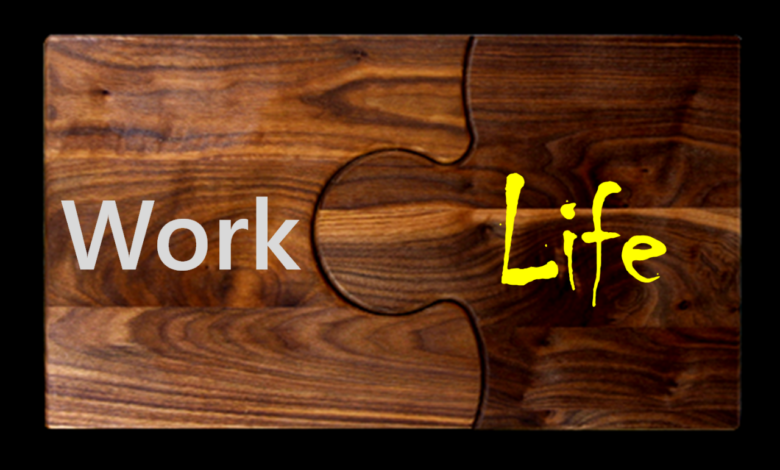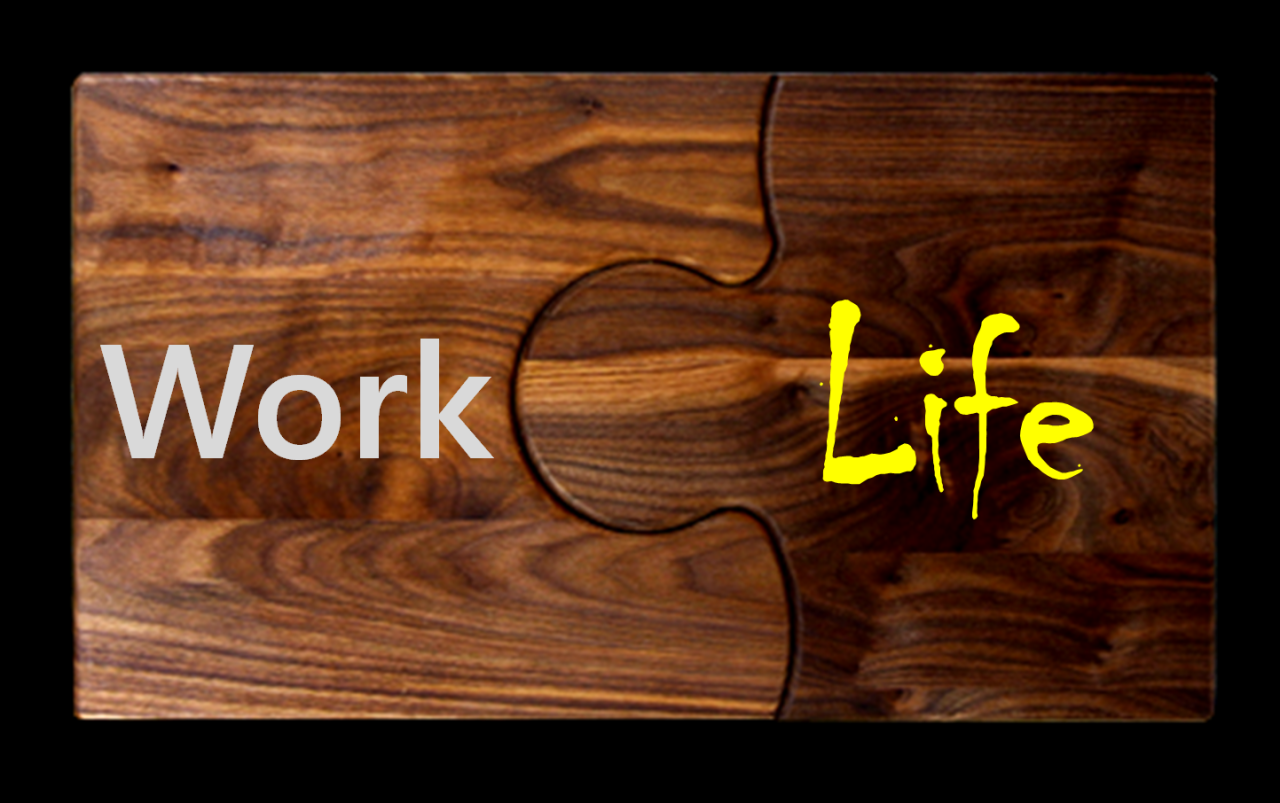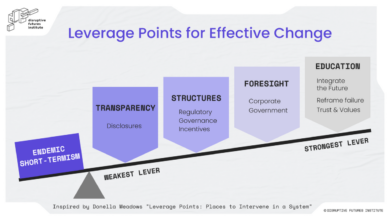
Authenticity and Work Life Integration A Guide
Authenticity and work life integration is a powerful combination that significantly impacts employee well-being and productivity. This exploration dives deep into defining authenticity in the workplace, examining strategies for balancing professional and personal lives while staying true to oneself. We’ll also discuss the challenges of maintaining authenticity in today’s dynamic work environment and offer practical solutions for cultivating a culture of authenticity.
This comprehensive guide delves into the multifaceted relationship between authenticity and work-life integration, exploring how these elements intertwine to foster a more fulfilling and productive work experience. From understanding the nuances of authentic behavior in the workplace to navigating the complexities of remote and hybrid work environments, this exploration aims to equip readers with the tools and insights necessary to thrive in their professional and personal lives.
Defining Authenticity in the Workplace

Authenticity in the workplace is more than just being yourself; it’s about aligning your values, actions, and communication with your true self in a way that fosters trust and respect. It’s a crucial component of strong leadership, productive teams, and a positive work environment. Authenticity isn’t about perfection, but rather about consistent effort to live your values and engage in genuine interactions.Authenticity in the professional context requires a conscious effort to balance personal values with the demands of the job.
This often involves navigating complex social dynamics and expectations while staying true to one’s core principles. It is a continuous journey of self-discovery and adaptation, not a destination.
Defining Authentic Behavior at Work
Authentic behavior in the workplace involves transparency and consistency in actions and words. It’s not just about saying what people want to hear but expressing genuine opinions and ideas. It includes acknowledging mistakes, taking responsibility, and seeking constructive feedback. Authenticity involves acting in accordance with your personal values, even when those values differ from organizational norms, as long as the differences are handled respectfully.
The Importance of Personal Values
Personal values act as a compass, guiding authentic behavior in the workplace. When your actions align with your core beliefs, you experience greater job satisfaction and a stronger sense of purpose. This alignment reduces internal conflict and fosters a more positive and productive work environment. For example, if a core value is honesty, then an authentic employee will strive to be truthful in their communication and interactions, even when facing pressure to compromise those values.
The Role of Self-Awareness in Achieving Authenticity
Self-awareness is the bedrock of authenticity. Understanding your strengths, weaknesses, values, and motivations allows you to act with integrity and purpose. Knowing your triggers and reactions enables you to manage them constructively, rather than letting them dictate your actions. Regular reflection and introspection are crucial to develop self-awareness and to remain grounded and authentic in the face of professional pressures.
Comparing Authentic and Inauthentic Leadership Styles
| Characteristic | Authentic Leadership | Inauthentic Leadership |
|---|---|---|
| Values Alignment | Leaders act in accordance with their personal values and beliefs, openly communicating them to their teams. | Leaders prioritize organizational goals over personal values, often creating a disconnect between their actions and their stated values. |
| Communication | Leaders communicate transparently, honestly, and actively listen to their team members, fostering open dialogue. | Leaders may communicate superficially, offering vague or misleading information, and failing to address concerns or feedback. |
| Decision-Making | Leaders involve their teams in decision-making processes, valuing diverse perspectives. | Leaders make decisions unilaterally, without considering input from others, often leading to resentment and decreased morale. |
| Accountability | Leaders take responsibility for their actions and decisions, both successes and failures. | Leaders may deflect blame or avoid accountability for their mistakes, fostering an environment of mistrust. |
| Motivation | Leaders inspire and motivate their teams through shared values and a sense of purpose. | Leaders motivate through extrinsic rewards or fear, creating a transactional relationship with their teams. |
Integrating Work-Life Balance with Authenticity
Authenticity in the workplace is not just about being yourself; it’s about aligning your personal values with your professional actions. Integrating this authenticity with a healthy work-life balance is crucial for sustained well-being and productivity. It’s about finding a harmonious way to live a fulfilling life that encompasses both your professional and personal spheres. This balance isn’t about sacrificing one for the other, but rather finding synergy and recognizing the interconnectedness of both.Maintaining a strong sense of self while navigating the demands of work and personal life requires conscious effort and intentional strategies.
It’s not a one-size-fits-all solution, but rather a personalized approach tailored to individual needs and circumstances. The key is to understand how authenticity can be a powerful tool in creating a balanced life, where both work and personal life thrive.
Connection Between Authenticity and Work-Life Integration
Authenticity in the workplace fosters a sense of purpose and belonging. When employees feel their true selves are respected and valued, they are more likely to be engaged and motivated. This intrinsic motivation, stemming from authenticity, often translates into a more balanced work-life integration. Individuals who are comfortable expressing their true selves are better equipped to set boundaries and prioritize their well-being, ultimately leading to a healthier integration of work and personal life.
Strategies for Maintaining Authenticity
A critical aspect of maintaining authenticity while balancing professional and personal life is setting healthy boundaries. This involves defining clear expectations for work hours, and actively disengaging from work outside of those hours. Prioritizing self-care activities, such as exercise, hobbies, and spending time with loved ones, is essential for maintaining a sense of balance. Consistent mindfulness practices, like meditation or journaling, can also help in managing stress and fostering a stronger sense of self.
- Setting Boundaries: Defining clear work hours and actively disengaging from work outside those hours is vital for maintaining a healthy work-life balance. This includes turning off notifications and avoiding work-related emails or calls during personal time. It’s about recognizing and respecting the boundaries between your professional and personal life.
- Prioritizing Self-Care: Incorporating regular self-care activities, such as exercise, hobbies, and spending quality time with loved ones, is essential for overall well-being. These activities provide a much-needed respite from work demands and allow you to recharge your batteries, fostering a stronger sense of self.
- Mindfulness Practices: Mindfulness techniques like meditation or journaling can help manage stress and promote a stronger sense of self-awareness. This self-awareness is crucial for making informed decisions that align with personal values, thereby enhancing authenticity in the workplace.
Integrating Personal Values into Professional Decisions
Authenticity in the workplace is closely linked to the integration of personal values into professional decisions. By identifying your core values, you can make choices that align with your beliefs and principles. This approach can lead to greater job satisfaction and a more fulfilling work experience. Examples include choosing projects that resonate with your values, advocating for ethical practices, and expressing your opinions in a way that reflects your core principles.
- Identifying Core Values: Understanding your core values—such as honesty, integrity, compassion, or creativity—is crucial for making professional decisions that align with your personal principles. This introspection helps in choosing work that aligns with your deeply held beliefs.
- Choosing Projects that Resonate: Selecting projects that resonate with your personal values can lead to a more fulfilling work experience. This connection to your values often fuels intrinsic motivation and enhances job satisfaction.
- Advocating for Ethical Practices: Speaking up for ethical practices, even when faced with challenges, demonstrates authenticity and aligns professional actions with personal values. This courage to act on your beliefs is a hallmark of a truly authentic professional.
Impact of Technology on Work-Life Integration
Technology has significantly impacted work-life integration, blurring the lines between professional and personal spheres. While offering conveniences, it can also lead to increased work-related stress and anxiety if not managed effectively. Establishing clear digital boundaries and using technology mindfully is crucial for maintaining authenticity and a balanced lifestyle.
Benefits and Challenges of Work-Life Balance
| Aspect | Benefits | Challenges |
|---|---|---|
| Improved Well-being | Reduced stress, increased happiness, enhanced physical health | Difficulty detaching from work, potential for burnout |
| Enhanced Productivity | Increased focus, improved creativity, higher quality work | Potential for distractions, time management issues |
| Stronger Relationships | More time for family and friends, deeper connections | Balancing work demands with personal commitments |
| Increased Authenticity | Greater alignment of personal values with professional actions | Potential for feeling overwhelmed or conflicted |
Challenges to Authenticity in the Workplace: Authenticity And Work Life Integration

Navigating the complexities of the modern workplace often requires a delicate balancing act between personal values and professional expectations. While integrating work-life balance with authenticity is crucial for well-being and productivity, several obstacles can hinder this process. Understanding these challenges is essential for fostering a more supportive and genuine work environment.Authenticity in the workplace is not always straightforward.
It demands courage and a willingness to navigate potential conflicts between personal beliefs and the demands of a specific work environment. This often means confronting societal pressures, organizational norms, and even personal insecurities that may lead to a suppression of genuine self-expression.
Societal Expectations and Norms
Societal pressures often dictate specific roles and expectations for individuals in various professions. These pressures can manifest as unspoken rules or norms about how one “should” behave or present oneself at work. For example, a woman in a traditionally male-dominated field might feel pressured to conform to certain stereotypes to be taken seriously. Similarly, an individual from a background with specific cultural norms may face challenges in expressing their unique perspectives without fear of judgment.
Finding authenticity in work-life integration is a constant journey, isn’t it? It’s about recognizing that our personal values and passions often intertwine with our professional lives. For example, organizations like sustaining our waters the fox wolf watershed alliance demonstrate how commitment to environmental stewardship can be a powerful force in driving genuine business practices. Ultimately, integrating these values into our work, whether it’s through volunteering or simply consciously choosing to work for a company aligned with our beliefs, allows us to cultivate a more authentic and fulfilling life.
These expectations can stifle individual expression and lead to a disconnect between the authentic self and the professional persona.
Workplace Culture and Norms
Workplace culture can create a strong pressure to conform to established norms, sometimes at the expense of individual authenticity. Hierarchical structures, strict protocols, or a culture of silence can make it difficult to express one’s true self. A highly competitive environment, for example, might encourage employees to downplay vulnerabilities or to present a consistently positive image, regardless of their actual feelings.
This can lead to a sense of inauthenticity and a suppression of diverse viewpoints.
Personal Insecurities and Fears
Personal insecurities and the fear of judgment or repercussions can significantly impact an individual’s ability to be authentic at work. Concerns about being perceived negatively by colleagues, supervisors, or clients can lead to self-censorship and a reluctance to express genuine opinions or feelings. For example, an employee might hesitate to voice a dissenting opinion during a meeting for fear of being labeled as disruptive or incompetent.
This fear of judgment can be a significant barrier to expressing one’s true self in the workplace.
Table of Potential Challenges
| Category | Challenge Description | Example |
|---|---|---|
| Societal Expectations | Pressures to conform to stereotypical roles and behaviors based on gender, race, or background. | A woman in a male-dominated engineering field feeling pressured to downplay her femininity to be taken seriously. |
| Workplace Norms | Implicit or explicit rules and behaviors expected within a particular company culture. | A culture of silence where employees are hesitant to voice concerns or differing opinions. |
| Personal Insecurities | Concerns about being judged, rejected, or punished for expressing one’s true self. | An employee hesitating to express a dissenting opinion in a meeting for fear of being seen as incompetent. |
Strategies for Cultivating Authenticity
Authenticity in the workplace isn’t just a desirable trait; it’s a cornerstone of a thriving and productive environment. When individuals feel comfortable expressing their true selves, they’re more engaged, innovative, and committed to their work. Cultivating a culture of authenticity requires a multifaceted approach, encompassing leadership practices, communication strategies, and organizational structures.Building a foundation of trust and psychological safety is essential for employees to embrace authenticity.
This, in turn, leads to increased collaboration, open communication, and a more positive work experience. A culture that values and rewards authenticity fosters a sense of belonging and encourages employees to contribute their unique perspectives.
Leadership Approaches Supporting Authentic Expression
Effective leadership plays a critical role in fostering a culture of authenticity. Leaders who model authentic behavior set the tone for the entire organization. This includes openly acknowledging their own strengths and weaknesses, admitting mistakes, and demonstrating vulnerability. These leaders also actively listen to and value diverse perspectives, recognizing the unique contributions of each team member.
- Transparent Communication: Leaders who are transparent in their communication foster trust and create an environment where employees feel comfortable sharing their thoughts and concerns. Open dialogue, regular feedback sessions, and honest communication about challenges and successes are crucial.
- Empowering Decision-Making: Giving employees autonomy and decision-making power empowers them to take ownership of their work and express their ideas more freely. This approach demonstrates trust in their capabilities and encourages individual contributions.
- Active Listening and Feedback: Leaders who actively listen to employee concerns and provide constructive feedback cultivate an environment where authentic expression is not only accepted but valued. This practice ensures employees feel heard and understood.
Methods for Building Trust and Psychological Safety
Trust and psychological safety are critical components for fostering authentic communication in the workplace. Creating a safe space where employees feel comfortable expressing their opinions, concerns, and even imperfections is vital.
- Establishing Clear Expectations: Defining clear expectations and roles helps employees understand how their contributions fit into the overall organizational structure and encourages them to operate with confidence and authenticity.
- Promoting Open Dialogue: Encourage open dialogue, constructive criticism, and the exchange of ideas through regular team meetings, brainstorming sessions, and informal interactions. Create opportunities for employees to connect on a personal level.
- Addressing Conflicts Constructively: Establishing processes for addressing conflicts fairly and transparently demonstrates a commitment to psychological safety. Leaders should encourage employees to address issues directly and constructively.
Examples of Successful Strategies in Various Organizations
Numerous organizations have successfully implemented strategies to cultivate authenticity. For example, Patagonia, known for its commitment to environmental sustainability, fosters authenticity by openly sharing its values and challenges with its employees and customers. This transparency builds trust and allows employees to align their work with their personal values.
- Zappos, a customer-centric company, prioritizes employee happiness and well-being. They actively encourage authentic communication and collaboration among employees, leading to a strong sense of belonging and high levels of employee engagement.
- Google’s focus on psychological safety allows employees to take risks, innovate, and express their ideas without fear of judgment. Their emphasis on open communication and feedback mechanisms creates a supportive environment for authentic expression.
Comparing Approaches to Building Authenticity in Diverse Work Environments
| Approach | Description | Suitability for Diverse Work Environments |
|---|---|---|
| Individualized Support | Providing tailored support and resources to help employees feel comfortable expressing their authentic selves. | High, as it addresses individual needs and preferences. |
| Team-Based Collaboration | Encouraging teamwork and open communication within teams to foster a sense of shared identity and belonging. | High, as it promotes understanding and respect among team members. |
| Organizational Culture Shift | Creating an organizational culture that values authenticity and fosters psychological safety throughout the organization. | High, as it affects the entire work environment. |
Impact of Authenticity on Employee Well-being

Authenticity in the workplace isn’t just a buzzword; it’s a powerful driver of employee well-being. When employees feel comfortable being themselves, they experience a more positive and fulfilling work environment. This authenticity fosters stronger connections, boosts morale, and ultimately leads to a more productive and engaged workforce. It’s about creating a space where individuals can thrive both personally and professionally.Authenticity directly impacts job satisfaction, team cohesion, stress levels, and overall employee engagement.
Employees who feel they can be genuine in their interactions experience higher levels of job satisfaction, as their values and beliefs are aligned with their work environment. This alignment reduces internal conflicts and fosters a sense of belonging.
Relationship Between Authenticity and Job Satisfaction
Employees who feel they can express their true selves at work often report higher job satisfaction. This stems from a sense of belonging and alignment between personal values and professional roles. When employees feel accepted and respected for who they are, they’re more likely to be invested in their work and committed to their organization. For instance, a creative marketing professional who feels comfortable expressing their unique ideas and perspectives is more likely to be satisfied with their work than someone who feels pressured to conform to a rigid corporate persona.
Impact of Authenticity on Team Cohesion and Productivity
Authenticity fosters stronger team cohesion. When team members feel comfortable being themselves, they can build trust and rapport more easily. This trust leads to open communication, collaborative problem-solving, and a greater sense of shared purpose. For example, a team of engineers who feel comfortable expressing concerns and sharing diverse viewpoints can tackle complex challenges more effectively, leading to higher productivity and innovative solutions.
Impact of Authenticity on Stress and Burnout
Authenticity can significantly reduce stress and burnout. When employees feel they can be themselves without fear of judgment, they experience less pressure to conform to unrealistic expectations. This reduction in pressure contributes to a healthier work-life balance. For example, an employee who feels comfortable admitting they need a break to recharge is less likely to experience burnout than someone who feels obligated to always be “on.”
Impact of Authenticity on Employee Engagement
Authenticity is closely linked to employee engagement. When employees feel authentic in their work, they’re more likely to be invested in their roles and committed to their organization’s success. This investment fuels a sense of ownership and responsibility, driving higher levels of engagement. For example, an employee who feels their voice is heard and valued is more likely to actively participate in company initiatives and contribute to the team’s overall success.
Correlation Between Authentic Behaviors and Positive Outcomes
| Authentic Behaviors | Job Satisfaction | Employee Engagement | Reduced Stress | Team Cohesion |
|---|---|---|---|---|
| Expressing true self | High | High | High | High |
| Open communication | High | High | Moderate | High |
| Sharing diverse viewpoints | High | High | Moderate | High |
| Seeking feedback | Moderate | High | Moderate | High |
| Admitting needs | Moderate | Moderate | High | Moderate |
Authenticity in Remote and Hybrid Work Environments
Navigating the blurred lines between personal and professional life in remote and hybrid work models demands a re-evaluation of authenticity. Traditional office dynamics, with their inherent cues and interactions, are replaced by a more nuanced virtual landscape. This shift impacts how we express ourselves, build relationships, and maintain our core values within the workplace. Maintaining authenticity in these settings requires intentional effort and a conscious approach to communication.Remote and hybrid work environments present unique opportunities and challenges for maintaining authenticity.
The absence of face-to-face interactions can lead to misinterpretations, while the increased reliance on digital communication presents opportunities for self-expression and connection in new ways. Recognizing these nuances is key to fostering a culture of genuine engagement and productivity.
Finding authenticity in work-life integration is tough, isn’t it? It’s about being truly yourself while navigating demanding schedules and responsibilities. For example, a recent redesignation of the Stevens Points Breast Care Center, as highlighted in this article, Stevens Points Breast Care Center receives redesignation , showcases a commitment to quality care, which, in turn, demonstrates a dedication to its employees’ well-being.
This speaks volumes about the importance of authenticity and work-life integration in the healthcare field, and perhaps, in other fields as well.
Adapting Authenticity in Virtual Interactions
Authenticity in remote work requires careful consideration of virtual communication styles. Building trust and rapport in the absence of nonverbal cues necessitates a deliberate effort to convey genuine interest and respect in digital interactions. This includes active listening, clear communication, and demonstrating empathy in written and verbal exchanges. Transparency and openness in expressing thoughts and feelings are also crucial for fostering a sense of connection.
Strategies for Fostering Authenticity in Virtual Interactions
- Embrace Transparency: Be open about your availability and limitations. Share updates about your day, personal experiences, and challenges in a way that aligns with your comfort level. This fosters trust and understanding among team members, and it’s a direct example of maintaining authenticity.
- Active Listening in Digital Spaces: Give undivided attention to colleagues during virtual meetings. Ask clarifying questions and actively engage in the conversation. This demonstration of genuine engagement is crucial for building strong relationships in remote settings.
- Leveraging Video Conferencing: Embrace video conferencing where possible. Nonverbal cues, even in a virtual environment, can enhance authenticity and foster a sense of connection.
- Cultivating Emotional Intelligence: Demonstrate empathy and understanding in virtual interactions. Recognize and acknowledge the potential for misinterpretations in written communication and respond with tact and consideration.
Challenges and Opportunities in Online Work Environments
Maintaining authenticity in online work environments presents several challenges. Misinterpretations are more likely in written communication, and maintaining appropriate boundaries between professional and personal life can be difficult. However, the increased flexibility and autonomy of remote work can also foster authenticity by allowing employees to express themselves and work in ways that best suit their individual styles. Opportunities exist to foster a more inclusive and diverse work culture where authenticity is valued.
Examples of Company Adaptations for Remote Authenticity
Several companies have adapted their cultures to support authenticity in remote settings. These adaptations often include creating virtual spaces for social interaction, encouraging open communication channels, and offering flexible work arrangements that allow employees to integrate their personal and professional lives. Companies also actively promote inclusivity and diversity to cultivate a workplace where employees feel comfortable expressing their true selves.
This can involve regular check-ins with teams, dedicated online spaces for casual conversations, and virtual team-building activities.
Finding authenticity in work-life integration is key, right? It’s about aligning your values with your daily grind. But that also means considering the bigger picture, like the future of energy. Innovative solutions, like those explored in the article about the future of sustainable energy looks to alternative materials , are crucial for a sustainable future. Ultimately, authentic work-life integration is about personal fulfillment, and that includes taking action towards a better world.
Approaches to Managing Remote and Hybrid Teams
| Approach | Communication Focus | Collaboration Style | Authenticity Emphasis |
|---|---|---|---|
| Transparent Communication | Open and honest dialogue, regular updates, clear expectations | Collaborative projects with clear roles and responsibilities, constructive feedback loops | Employees feel comfortable sharing their thoughts and perspectives, building trust |
| Active Listening | Empathetic responses to concerns, understanding diverse communication styles | Respectful debate, valuing diverse viewpoints, active participation in discussions | Creates an environment where employees feel heard and understood |
| Flexibility and Autonomy | Trust-based approach to work, adaptable schedules, and individual work styles | Empowered teams working independently or collaboratively, adapting to diverse needs | Employees feel empowered to manage their work and life balance, fostering their authenticity |
Authenticity and Performance
Authenticity isn’t just a feel-good concept; it’s a powerful driver of performance. When individuals feel comfortable being their true selves at work, they’re more likely to engage fully, contribute meaningfully, and ultimately, achieve higher levels of success. This authenticity fosters a positive work environment, boosts morale, and enhances productivity.Authenticity in the workplace goes beyond simply being honest. It’s about aligning one’s values, beliefs, and behaviors with their internal compass.
This alignment leads to more meaningful interactions and greater engagement. When individuals feel genuinely connected to their work and their colleagues, it positively impacts their performance and overall well-being.
The Link Between Authentic Behavior and Performance
Authenticity fuels performance by fostering a deep sense of engagement and purpose. When individuals feel comfortable expressing their true selves, they’re more likely to invest their time and energy in their work. This investment translates directly into higher productivity and better results. Conversely, when individuals feel compelled to suppress their true selves, they may experience decreased motivation and diminished performance.
How Authenticity Enhances Creativity and Innovation
Authenticity fosters a safe space for employees to express unique perspectives and ideas. When individuals feel comfortable being themselves, they’re more likely to think outside the box, challenge conventional wisdom, and generate innovative solutions. This open exchange of ideas leads to a more dynamic and creative work environment. For example, an employee who genuinely enjoys problem-solving may approach a challenging project with a fresh perspective, leading to novel solutions.
Likewise, someone who is naturally inquisitive and curious will likely explore new approaches and perspectives, generating unique insights.
Authenticity and Effective Communication
Authenticity plays a crucial role in effective communication. When individuals communicate genuinely, they build trust and rapport with colleagues. This trust allows for open and honest dialogue, enabling more effective collaboration and problem-solving. Clear, concise, and authentic communication is vital in any workplace. Employees who are comfortable expressing themselves naturally and honestly will find it easier to connect with others and convey their ideas effectively.
Impact of Authenticity on Leadership Effectiveness, Authenticity and work life integration
Authentic leaders inspire trust and respect from their teams. When leaders are true to themselves, they model the behaviors they expect from their employees. This consistency in actions and words fosters a culture of honesty and transparency. Authentic leaders also encourage their team members to be authentic, empowering them to contribute their unique perspectives. This leads to increased employee engagement and higher levels of team performance.
Authenticity and Key Performance Indicators (KPIs)
The link between authenticity and KPIs isn’t always immediately obvious, but a strong correlation exists. Authenticity can impact various KPIs, including but not limited to, productivity, innovation, and employee satisfaction.
| KPI | Connection to Authenticity |
|---|---|
| Productivity | Authenticity encourages engagement, which translates to higher output. |
| Innovation | Authenticity creates a safe space for diverse ideas and creative problem-solving. |
| Employee Satisfaction | Authenticity fosters a positive work environment, increasing job satisfaction. |
| Customer Satisfaction | Authenticity, when reflected in service interactions, leads to more positive customer experiences. |
Summary
In conclusion, authenticity and work life integration are not just buzzwords; they are crucial components of a healthy and successful work experience. By embracing authenticity, fostering a supportive work environment, and understanding the nuances of modern work arrangements, individuals and organizations can create a space where both personal and professional lives flourish. This guide provides a framework for navigating the challenges and realizing the benefits of this essential integration.






